In the 1970s, researchers Barry Turner and Nick Pidgeon examined 85 different accidents and disasters in Britain over an 11 year period and found the one thing they had in common was a long incubation period where warning signs weren’t taken seriously. This incubation period is the breeding ground for what’s referred to as Drift.
Drift Into Failure
Drift is when “local decisions that made sense at the time cumulatively become a set of socially organised circumstances and norms that make the system more likely to produce a harmful outcome”.
You’ll recall this image from Part 1 of this 2-part series where you can see the variance between the way work is done day-to-day, colloquially referred to as “Work as Done”, and our plan for work, or “Work as Planned”.

The warning signs of drift are not necessarily consciously ignored by those in the organization, because Drift is difficult to see until it’s already happened. Drift tends to be a slow process, with multiple steps that occur over an extended period. Each step is usually small enough that it can go unnoticed, with no significant problems until it’s too late, which is why deviances are not report worthy and everything seems normal.
If we’re to look for early warning signs of drift, we must be aware of why drift occurs. You’ll recall in Part I I introduced the Local Rationality Principle which suggests that people will make decisions on what course of action to take depending on what makes sense given the situational indications, operational pressures, and organisational norms that exist at the time.
Common Trade-Offs
So I’m going to take you through three ingredients to the Local Rationality Principle with the intent that you might appreciate where your board is influencing people’s local rationale, but you’ll also be in a better position to monitor for early warning signs that drift is occurring by asking better questions.
The first ingredient to the Local Rationality Principle is the existence of competing goals that cause people to make trade-offs at the expense of health and safety.
Every organization is trying to achieve multiple goals at the same time, which means goal conflicts are inevitable, particularly between production and efficiency … more specifically, between production targets, resource scarcity and production pressure from internal and external sources. In Part 1, I showed you Rasmussen’s drift toward danger migration model that depicts some of these conflicting external pressures such as trying to be efficient, productive and safe – there’s no way around these, there’s only room for manoeuvring inside the space.
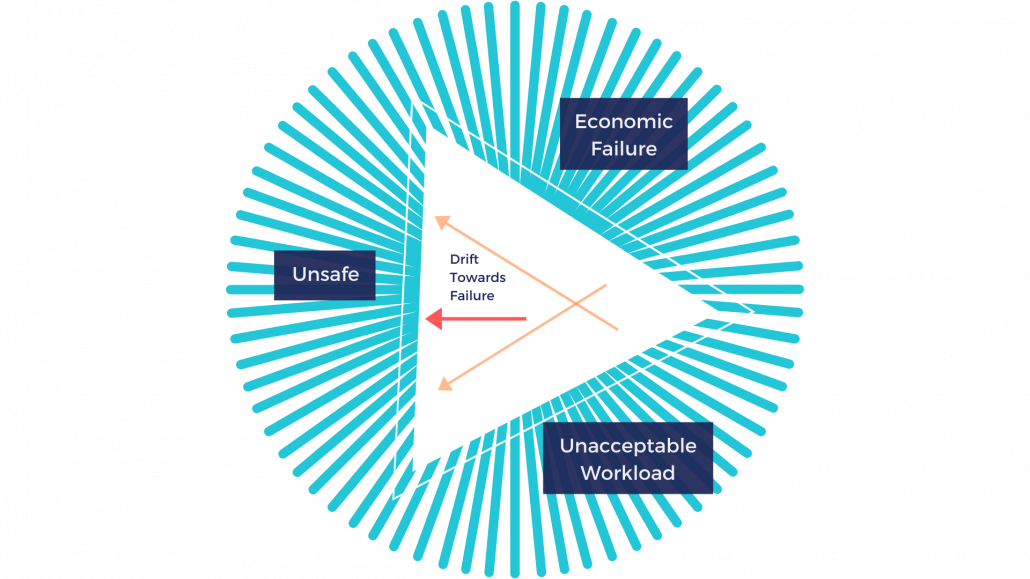
The structures and systems in organizations that create these conflicting goals and influence external and internal production pressures include targets, incentives, or other performance measures that work as an objective or goal, or there are structures and systems that constrict work, such as lack of resources, complicated systems, or rules that don’t make sense or support our work.

Internal pressures might include how we feel pressured to work agreeably with others when perhaps challenging the status quo would be better for the organisation or make work safer and healthier, but bringing those issues to the surface and working through a better solution may take time, and of course that would be to the detriment of efficiency or create delays.
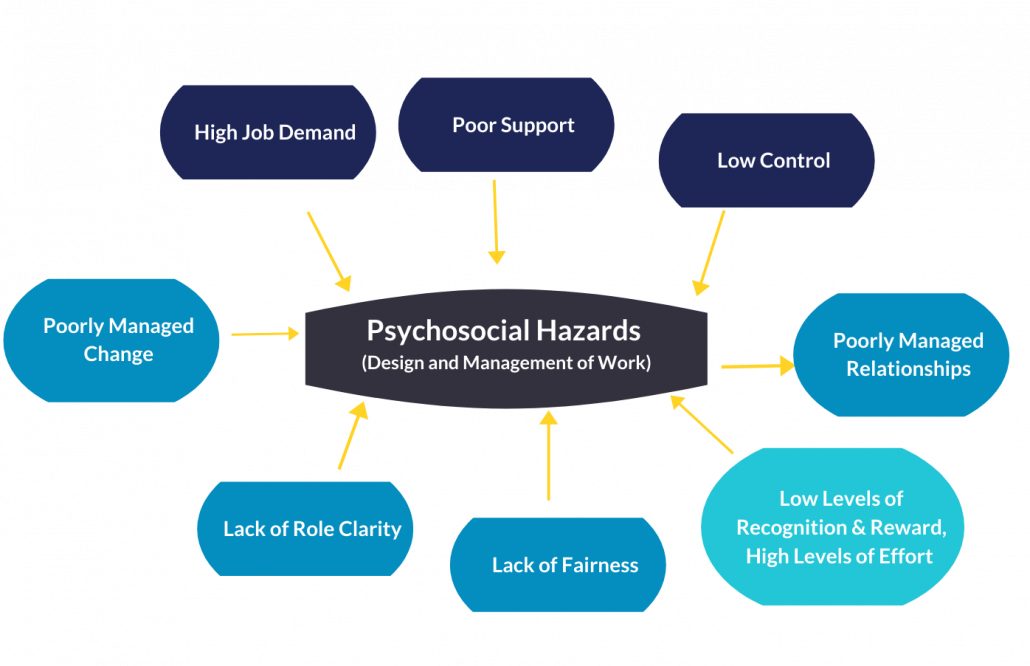
Raising issues might also be seen as “making things more difficult” because we haven’t cultivated a learning culture, so people have more of a fixed mindset, over a growth mindset – they think, “it’s always worked this way, so why change things?”. Another internal pressure that might lead to unsafe outcomes could be the result of psycho-social hazards, which are hazards in the design and organization of work and the social aspects of work, that affect our physical and psychological health. For example, we may have too much work to do and not enough control over our work so we become stressed, and over time burnt out, and because of this strain and feelings of injustice towards us, we will cut corners to make things more efficient, but less safe.
All of these forces prevent us from speaking up even if we think something feels unsafe.
Reconciling Goal Conflict
The thing is, people actively make reconciling goal conflict their own problem and this is an issue because humans have a tendency to choose efficiency over thoroughness where there’s a conflict, but unfortunately efficiency is usually at the expense of our health and safety. And when something happens, the board and management ask, “why didn’t they follow the procedure?!”, or we penalise people for not following the procedure, but that mindset ignores the structures and systems that influence peoples’ decision-making and how everyday work gets done.
The reality is, promoting / rewarding efficiency doesn’t create safety, but what many people don’t realise is that promoting and rewarding safety create efficiency – not just safe outcomes – because when people feel you value their most basic human needs – their health, safety and wellbeing – they give back to their employer through a sense of reciprocity through innovation, productivity, efficiencies, and caring for others the way they feel cared for.
So you can appreciate that due to these natural internal and external pressures that exist in every organization, it’s inevitable that people will compromise on health and safety to meet the various demands, constraints and objectives that they’re faced with. This doesn’t mean that we accept that compromising on health and safety is Ok, rather accepting this is a path towards recognising that rules and procedures become less important in shaping people’s behaviour; whereas, task demands, environmental changes and social norms become more important. Another reason why safety is not all about rules. This means our attention and resources, when it comes to delivering safe outcomes, should always be on how we can make employees’ jobs as easy as possible to do the right way.
Because when our work is not easy, we go around things, we ignore policies and procedures, rules, and sometimes we’ll even work to the detriment of our health and safety – this happens just as much in office environments as it does in high physical risk industries. On the other hand, when our job is easy, because we have access to for example the right resources, information, systems that support our work, the right way will inevitably be the safest and healthiest way because people want to be healthy and safe – people are not a problem for us to solve, they’re the solution to efficiency, productivity, innovation,and a culture where people feel they matter.
So we have to be particularly interested in how people view goal conflicts from inside their local reality if we’re to recognise drift.
Ok, so that’s the first ingredient to the Local Rationality Principle – the existence of competing goals where people must make trade-offs, and this contributes to organizations drifting into failure, but nothing is broken, whatever the trade-offs are they become everyday normal work, not report worthy.
Proactive Governance Measures
Here are few tips for you to think about in your governance role to help prevent drift or at least monitor for red flags.
From a proactive perspective:
- Emphasize the importance in understanding how work is done and learning where people feel they need to trade off health and safety to get the job done, because that’s where you want to see your executive allocating resources – making people’s job as easy as possible to do the right way. How do employees make sense of these conflicts, in other words, where are there instances when people have felt like they had to de-prioritize health and safety to get the job done and why? And how does this contrast with the views of management for the same activities? And from the board’s perspective, where and how is your board influencing people’s perception of priorities through your influence on organizational priorities.
Reactive Governance Measures
From a reactive perspective, when there’s been an incident, injury or illness or fatality:
- Look for context and understand the conditions of work … understand the structures in place that support or promote the behaviour? Look for patterns of behaviour, don’t assume this is the first time things have happened in this way, because in most cases, it’s not the first time and it won’t be the last.
- Reflect on your worldview – what assumptions do you hold about the system that might be preventing you from understanding what happened? A common misconception I hear from board members is that safety is all about rules. I hope this video has given some insight as to why that’s not the case.
In Part 3 of this series I’ll walk you through another ingredient to the Local Rationality Principle that causes drift to occur and some further governance tips.
Welcome!
I’m Samantha
I help board members succeed in the boardroom and make a positive impact on the health, happiness and resilience of society through their effective leadership and governance of safety, health and well-being.
RESOURCES
YOU MAY ALSO LIKE…
FEATURED CONTENT
[text-blocks id=”4249″ plain=”1″]




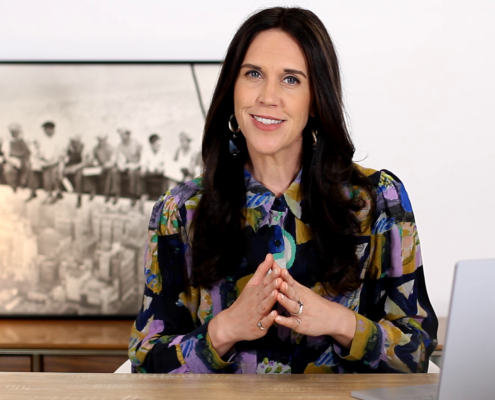
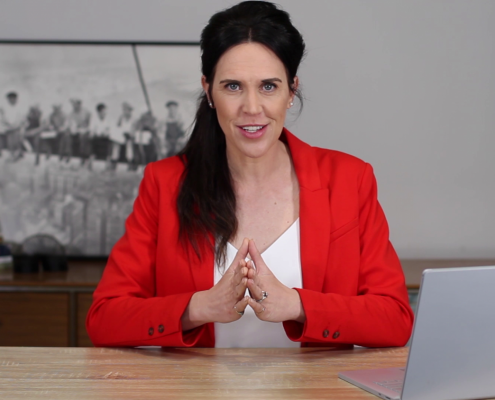
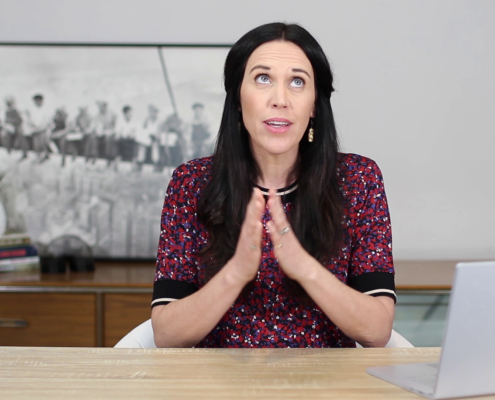

Let us know what you have to say:
Want to join the discussion?Your email address will not be published.